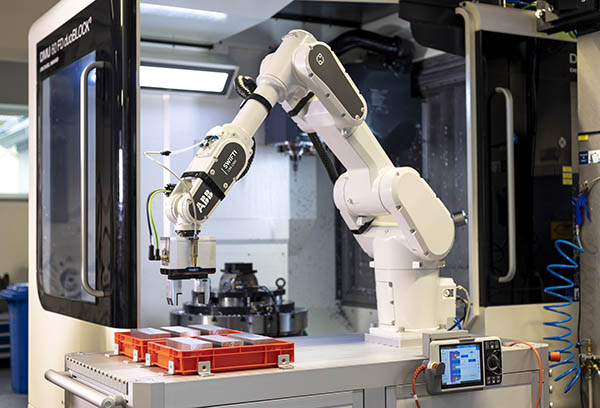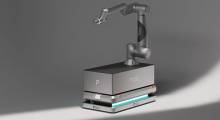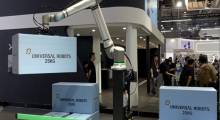Collaborative robot arms are typically smaller and slower than their industrial cousins. ABB today said it has launched the SWIFTI CRB 1300 “industrial collaborative robot” to bridge the gap between cobots and industrial robots.
The SWIFTI CRB 1300 is suitable for a wide variety of production and product-handling applications, ranging from machine tending and palletizing to pick-and-place operations, it said.
“Our customers are looking to robotic automation to make their processes more flexible, efficient, and resilient, helping to counter labor shortages by enabling their employees to perform more value-added work,” stated Andrea Cassoni, managing director for global general industry robotics at ABB.
“The latest addition to our SWIFTI family is a highly accurate, high-payload cobot that’s up to six times faster than other robots in its class,” he said. “This means it can be used by both SMEs and large manufacturers looking for collaborative automated solutions to achieve new levels of flexibility and productivity.”
SWIFTI designed for speed and accuracy
The SWIFTI CRB 1300 incorporates several features that can improve production efficiency by up to 44% in comparison with other cobots in its class, claimed ABB. In a typical palletizing application, SWIFTI’s speed and performance enable it to handle up to 13 boxes per minute compared with nine boxes handled by other cobots in its class, said the company.
Powered by ABB’s OmniCore C90XT controller, the SWIFTI CRB 1300 is up to five times more precise than any cobot in its class, making it ideal for tasks requiring consistent accuracy and repeatability, ABB said. The cobot also a top speed of 6.2m/s, and payload options from 7 to 11 kg (15.4 to 24.2 lb.) and reaches from 0.9 to 1.4 m (2.9 to 4.5 ft.).
The robot can perform a range of higher-payload tasks including screwdriving and assembly, said ABB. With protection against dust and moisture (up to IP67), it can also be used in demanding environments and machine-tending applications.
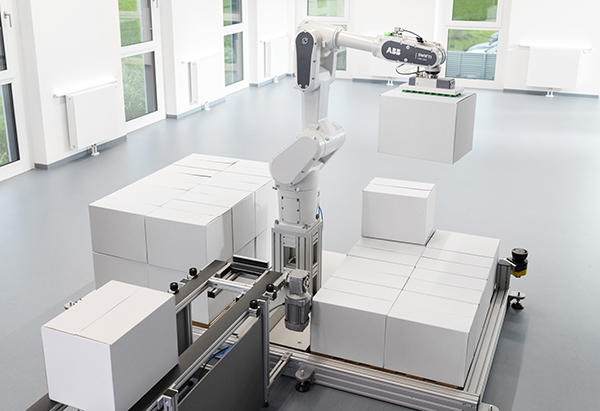
ABB programs cobot for safety, simplicity
The SWIFTI CRB 1300 includes a safety laser scanner integrated with ABB’s SafeMove collaborative safety software. These technologies enable safe collaboration without the space requirements and costs associated with installing protective fencing or other physical barriers, asserted ABB.
If the laser scanner detects a human worker within SWIFTI’s operating area, ABB’s SafeMove software is designed to automatically slow the robot or stop it completely. As the person moves away, movement will be restored, returning to full speed for full productivity only once the workspace is completely clear.
As a further protective measure, a built-in interaction status light provides a visual indication of the cobot’s status when a worker is within the area, said ABB. It added that SafeMove add-ins allow for easy integration of the scanners, enabling workers to quickly set up a safe working zone and other safety features using the handheld FlexPendant operating unit.
The same simplicity applies to programming the SWIFT CRB 1300, said ABB. Users can set up the robot by either physically guiding it through a process (lead-through programming) or through ABB’s new Wizard Easy Programming software.
Based on simple graphical blocks, Wizard Easy Programming makes programming accessible for non-specialists in robotics, ABB said.
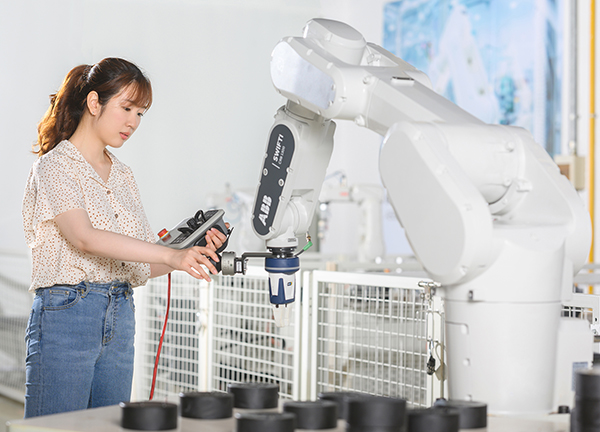
ABB Robotics portfolio grows
The SWIFTI CRB 1300 is part of ABB's wider cobot portfolio, which covers payloads from 0.5 to 11 kg (1.1 to 24.2 lb.). Options include the YuMi single and dual-arm robots, the GoFa CRB 15000, and the SWIFTI CRB 1100 industrial collaborative robot for payloads up to 4 kg (8.8 lb.). The company added that its high-quality designs are backed by expert support.
Zurich-based ABB Ltd. said it has a history of technical excellence stretching back more than 130 years. The electrification, automation, and motion company has more than 105,000 employees in over 100 countries.
The ABB Robotics & Discrete Automation unit said it has shipped more than 500,000 systems as it supports customers of all sizes in “their transition to the connected and collaborative factory of the future.” Its U.S. offices are in Auburn Hills, Mich.
Article topics
Email Sign Up

